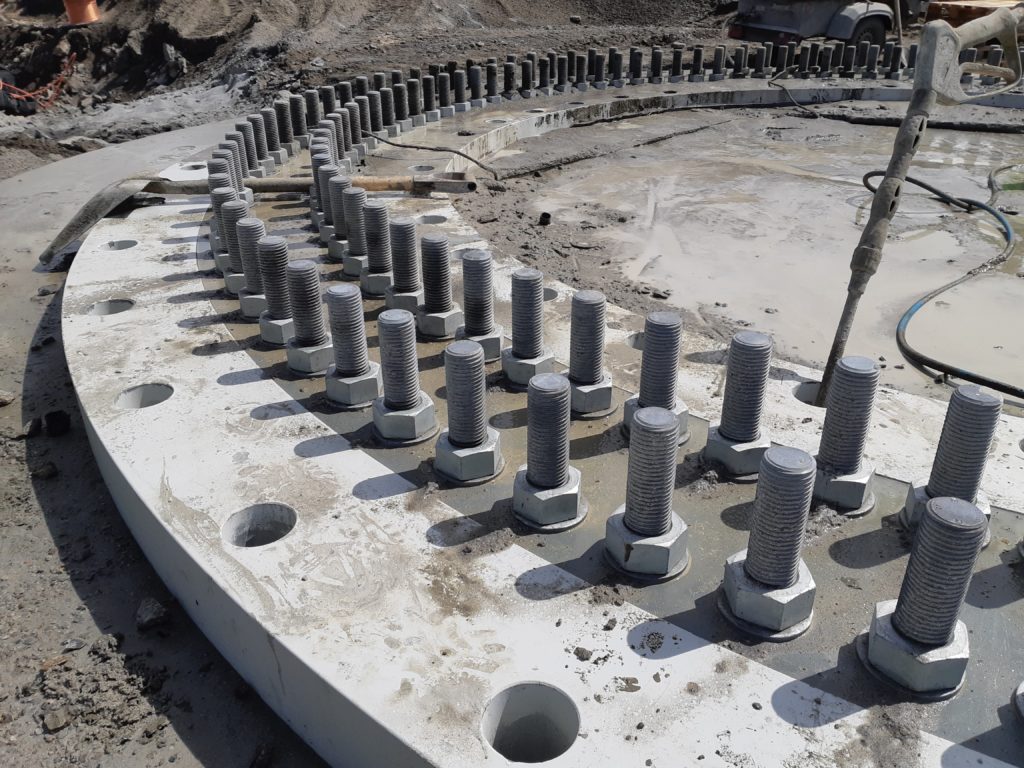The Benefits of Using Williams Anchors for Long-Lasting Structure Protection
The Benefits of Using Williams Anchors for Long-Lasting Structure Protection
Blog Article
Reliable Rock Anchors for Secure and Stable Structures
In the realm of civil engineering, the function of trustworthy rock supports can not be overemphasized, as they are critical in developing safe and secure and stable structures across a variety of applications. These supports not just promote load transfer from frameworks to bedrock but likewise provide important resistance against all-natural forces, consisting of wind and seismic task. Understanding the different sorts of rock supports, their certain applications, and the intricacies of installation and upkeep is crucial for optimizing their performance. What factors should be thought about when selecting one of the most proper securing service for a provided job?
Kinds of Rock Anchors

Easy supports rely upon the weight of the framework and the bordering dirt or rock to supply resistance. They are typically utilized in applications where minimal activity is anticipated. Active supports, on the various other hand, entail the application of stress with a high-strength cable or rod, producing a pre-stressed problem in the anchor. This kind is specifically beneficial in dynamic atmospheres, such as landslide-prone locations.
Grouted supports are another significant group, wherein a steel bar or wire is put right into a pierced hole, adhered to by a cementitious grout. When treated, the cement bonds with the surrounding rock, developing a robust anchoring system. Each kind of rock anchor provides distinctive benefits based on the certain geological problems and structural demands, consequently playing an important role in the general integrity and durability of constructed facilities.
Applications in Building
Rock supports play an essential role in numerous construction applications, providing necessary support and security in diverse environments. These cutting-edge services are utilized in tasks ranging from large-scale infrastructure developments to smaller domestic frameworks. Among the key applications of rock anchors is in the stablizing of inclines and retaining wall surfaces, where they aid stop dirt erosion and maintain structural honesty.
In addition, rock anchors contribute in protecting foundations for bridges, tunnels, and skyscrapers, ensuring they can hold up against lateral pressures such as wind and seismic activity. Their flexibility allows for installment in difficult geological problems, making them ideal for tasks in mountainous or rough terrains.

Key Choice Criteria
Selecting the ideal rock support for a specific application calls for mindful consideration of several vital requirements. The geological conditions of the website need to be extensively analyzed. Understanding rock type, toughness, and security is necessary to make sure that the anchor will carry out effectively under tons conditions.

One more crucial factor is the rust resistance of the support products. In environments subjected to moisture or chemicals, making use of corrosion-resistant products will certainly extend the life expectancy of the supports and preserve architectural stability gradually.
In addition, the anchor's installation approach must straighten with the project's requirements and restraints. Reduce of installment, in addition to the possible influence on bordering structures, need to be thought about.
Setup Methods
Efficient installation methods are vital for the effective efficiency of rock supports. Proper setup makes sure that the browse around here supports achieve the preferred load-bearing capacity and stability within the geological problems. The initial step in the installment process entails website evaluation, where geological view it now surveys identify the rock type, condition, and any type of possible challenges.
As soon as the website is evaluated, the ideal boring technique should be chosen-- choices consist of rotating exploration, diamond exploration, or percussion drilling. The option depends on rock firmness and ecological considerations. Accurate exploration deepness and angle are necessary to make certain that the anchors align with architectural needs and tons circulation.
After drilling, the following phase entails cleansing the borehole to get rid of debris, which can jeopardize bond stamina. Following this, the anchor is put, and if called for, a cement or material is infused to enhance attachment. The curing time of these materials must be abided by, ensuring that the supports attain complete strength prior to any kind of load is used.
Maintenance and Examination
Appropriate maintenance and evaluation of rock anchors are necessary to guarantee their lasting efficiency and integrity (Williams Anchors). Routine analyses assist identify any type of possible issues, such as corrosion, displacement, or structural tiredness that can endanger the integrity of the anchoring system
Routine evaluations should be performed at specified intervals, thinking about environmental variables and the details application of the rock anchors. Aesthetic inspections should focus on the exposed sections of the anchors, examining for indicators of corrosion, cracks, or other anomalies. Additionally, it is critical to evaluate the surrounding geological problems to discover any kind of changes in soil or rock that may influence anchor efficiency.
Sometimes, more innovative techniques such as lots testing check over here or non-destructive screening might be required to identify the anchors' load-bearing ability and total health and wellness. Correct documentation of assessment findings, maintenance tasks, and any type of fixings or substitutes performed is crucial for ongoing analysis and conformity with sector standards.
Final Thought
To conclude, dependable rock supports play an essential duty in making sure safe and secure and secure foundations throughout numerous building applications. By successfully transferring lots and boosting stability versus side forces, these supports add considerably to the durability and honesty of frameworks such as bridges, tunnels, and keeping wall surfaces. Strategic selection, setup, and upkeep of rock supports are important for optimizing efficiency and safeguarding public safety and security, ultimately underscoring their value in modern-day design techniques.
Report this page